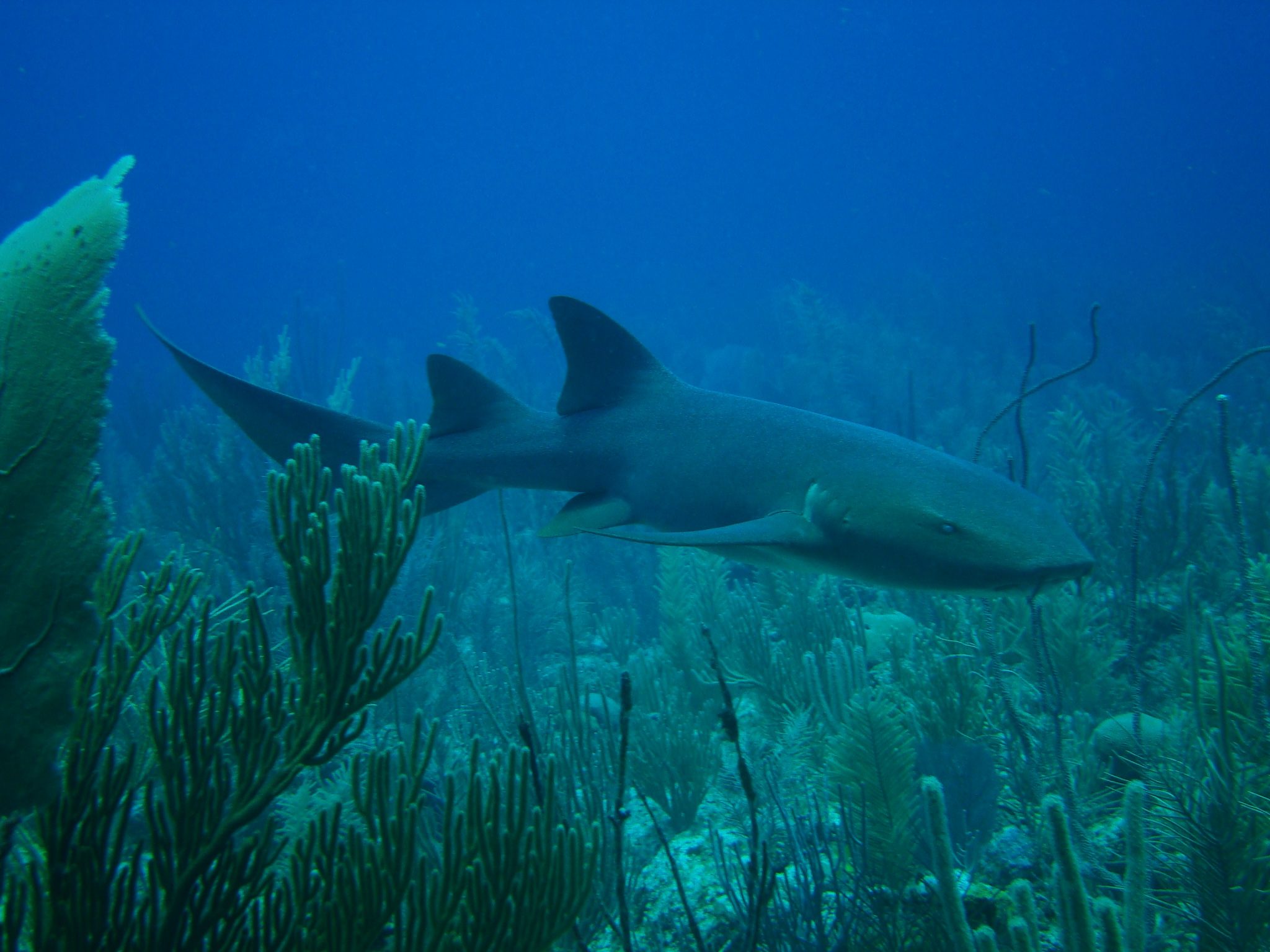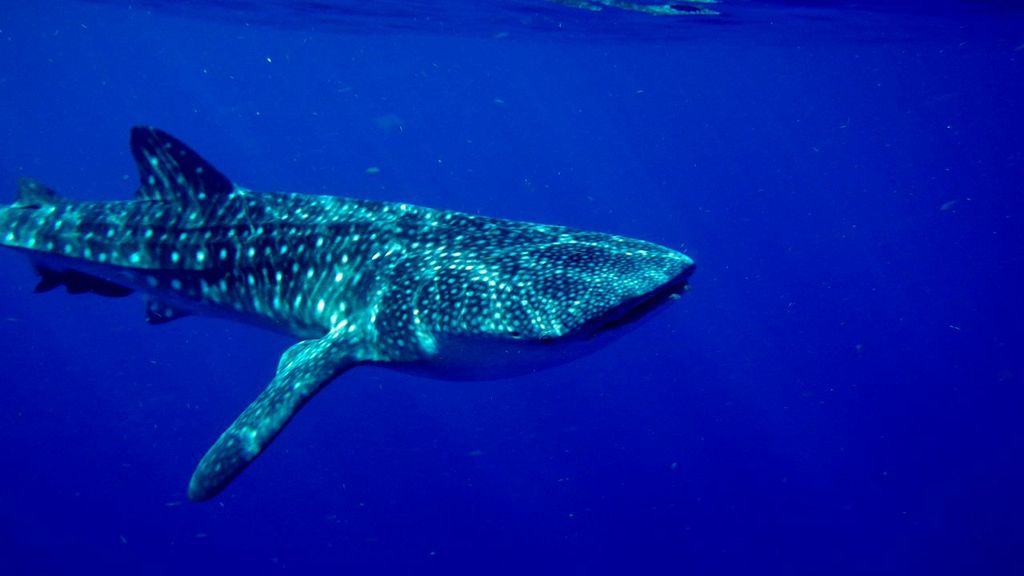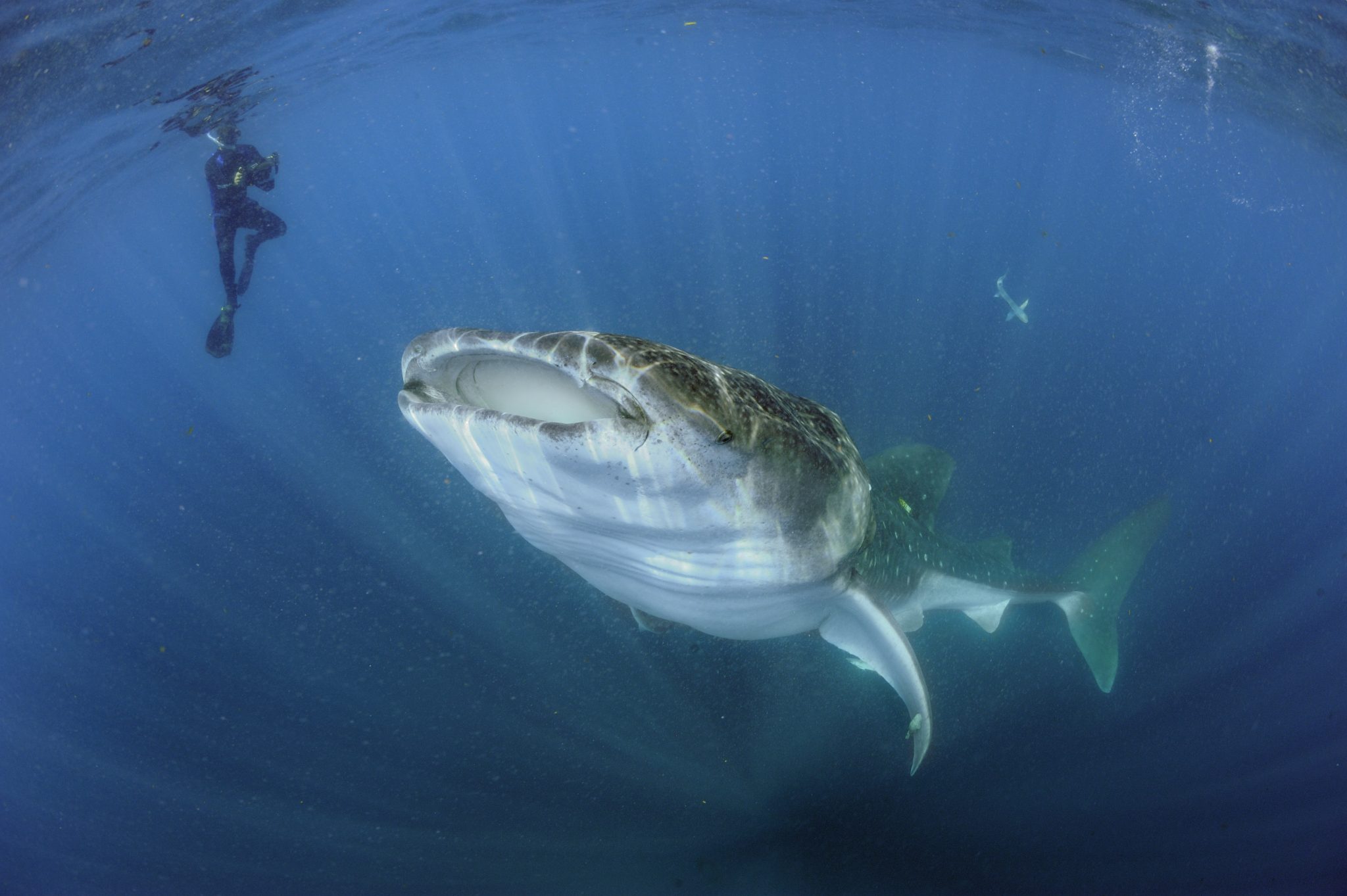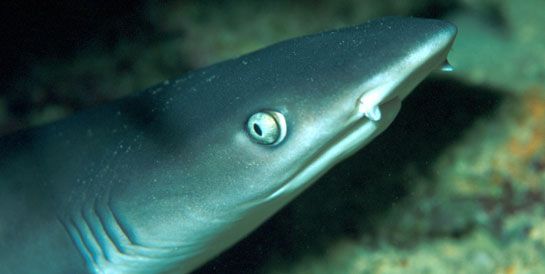

Today’s the day. You’re on expedition, gearing up to jump into the ocean with the team. Maybe you’re prepping your scuba gear for your final PADI Open Water dive in Indonesia, grabbing your measuring tape to conduct a coral reef line transect in Honduras, or getting your snorkelling gear ready for seagrass and turtle surveys in Mexico. Wherever you are, these stunning locations are home to some incredible marine vertebrates – including sharks! And if you’re lucky, you just might spot one. So let me take you through three species you might come across on expedition… complete with some bite-sized shark facts, of course!
Before we dive into the details, let’s tackle the big one: fear. It’s totally normal to feel nervous about encountering sharks in the wild. But here’s the truth: most sharks you’ll meet are shy, non-aggressive, and honestly more scared of you than you are of them. Seeing a shark up close is a rare, incredible experience and something to feel lucky about. These amazing animals play a vital role in ocean health, and getting to observe them is a moment you’ll never forget. So, let’s get fascinated…

Photo by James Saunders (nurse shark)
Nurse sharks (Ginglymostoma cirratum)
Nurse sharks can grow up to 4.3 metres, but most individuals you’ll encounter are around 3 metres long. They’re basically the underdog of the shark world. Slow-moving, bottom-dwelling, and often seen tucked into reef crevices or stretched out on the sandy seafloor. Unlike many other shark species, that need to keep swimming to stay alive, nurse sharks can lie still thanks to buccal pumping, a method where they push oxygen-rich water over their gills. This is why you’ll often see them just lying there, gently opening and closing their mouth. They might not have the classic “shark teeth” you’d expect, but their suction power is seriously strong. They’ve been known to vacuum up prey with impressive force. Fun fact: nurse sharks have actually been documented using their pectoral fins to “walk” along the seabed while foraging (Parton et al., 2023). They’re usually dark grey or brown, well-camouflaged, and easy to miss so keep your eyes open when diving or snorkelling on the reef!

Photo from Akumal Dive Centre (nurse shark)
Whale sharks (Rhincodon typus)
The whale shark is the biggest fish in the ocean. And yes, it’s a shark, not a whale (so Dory’s whale call in Finding Nemo doesn’t add up, but it’s hilarious)! These filter feeding giants can grow up to 18 metres long, though most sightings are of individuals between 5 and 10 metres. Despite their size, they’re completely harmless to humans and feed predominantly on plankton, krill, and tiny fish by swimming with their mouths wide open, filtering enough water to fill about 40 bathtubs every hour! They’re usually spotted cruising near the surface, especially during plankton blooms, and their skin is covered in unique spots and stripes.

Photo by Sara Carlson (whale shark)
Fun fact: scientists actually use these patterns to identify individuals, kind of like fingerprints (Norman et al., 2007). Whale sharks are a migratory species and currently listed as vulnerable, facing threats like boat strikes, entanglement, and bycatch in fisheries. But if you’re in the right place at the right time, you might just get the chance to swim alongside these gentle giants!

Photo by Brian Skerry (whale shark)
White-tip reef sharks (Triaenodon obesus)
The whitetip reef shark is a sleek, reef-dwelling species that usually grows to around 1.5 to 2 metres long. You’ll spot them by the white tips on their dorsal and caudal (tail) fin, and often by their relaxed attitude. During the day, they’re usually found tucked away under ledges or resting in reef caves, waiting for nightfall to hunt. Like nurse sharks mentioned above, they use buccal pumping, so it’s pretty common to see them lying still on the sea floor. When night comes, they head out to forage for reef prey like bony fish, octopus, and crustaceans.

Photo by Coral Diver (white-tip reef shark)
Fun fact: this species plays a very important ecological role as a mid-level predator in coral reef ecosystems (Robbins et al., 2006), helping to regulate prey populations and maintain reef health. If you’re diving on a reef in Madagascar or South Africa, there’s a good chance you’ll come across one so keep your eyes peeled near ledges and overhangs!

White-tip reef shark
So, there we go. Three amazing shark species you might be lucky enough to see on expedition. If you do see one, remember – stay curious, stay calm and enjoy observing these incredible animals. The ocean is waiting!
Title photo by Alejandro Usobiaga
Social Media Links